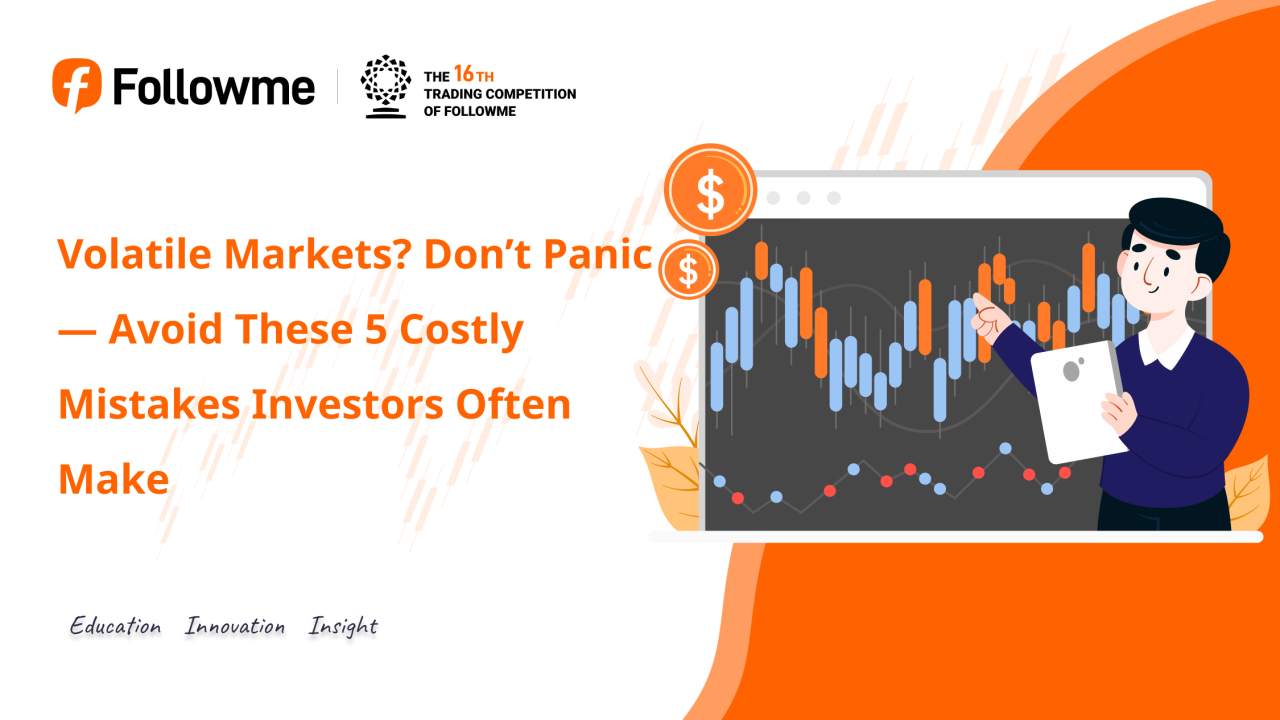
Volatile Markets? Don’t Panic — Avoid These 5 Costly Mistakes Investors Often Make
In turbulent markets, even the most seasoned investors can fall into emotional traps. Sharp price swings, breaking headlines, and sudden uncertainty can make staying calm incredibly difficult. But history shows that rash decisions made during volatile times often lead to the biggest regrets.
Below are the five most common investor missteps during wild markets — and how you can avoid them with smart, deliberate action.
1. Panic Selling: Turning Temporary Dips Into Permanent Losses
Fear is a powerful emotion. When portfolios bleed red, the instinct to “just get out” feels overwhelming. But what many investors forget is this: markets don’t fall forever.
Selling during a downturn often locks in losses that could have recovered. Many of the best-performing days in market history come right after big drops — and if you're not invested, you miss out.
✔️ What to do instead:
Rather than acting on emotion, ask a critical question: Has anything fundamentally changed about the asset I hold? If not, consider holding — or buying into strength if the price is attractive. Volatility can be a gift for disciplined traders who can see beyond short-term noise.
2. Trying to Time the Market: A Costly Illusion
“I’ll wait until things calm down” is one of the most expensive phrases in investing. It’s human nature to seek certainty, but markets don’t offer that luxury.
The idea of jumping in and out at the perfect moments may sound ideal — but in reality, missing just a few of the market’s best recovery days can significantly damage long-term returns.
✔️ What to do instead:
Stick to dollar-cost averaging (DCA) — investing regular amounts over time, regardless of market moves. This approach reduces the impact of timing and helps you buy more when prices are low and less when prices are high. Over time, it evens out your cost and helps you stay emotionally detached.
3. Overloading on “Safe” Assets: Playing It Too Safe
When volatility spikes, many investors stampede into cash, bonds, or ultra-conservative assets. But going too safe can be just as risky — especially if inflation erodes purchasing power or if you miss a rebound.
✔️ What to do instead:
Rather than pulling out entirely, consider reallocating within your portfolio. Defensive sectors like healthcare or utilities, dividend-paying stocks, and minimum-volatility ETFs can offer stability without completely sacrificing growth potential.
Remember, diversification isn’t just about reducing risk — it’s about staying in the game.
4. Abandoning the Plan: Emotional Detours Lead to Painful Endings
When markets get rough, your carefully thought-out investment strategy can suddenly feel irrelevant. But rewriting your roadmap during a storm is rarely wise.
Too often, investors abandon long-term plans just when they’re needed most — shifting from a strategy based on goals and risk tolerance to one based on fear and headlines.
✔️ What to do instead:
Stay anchored. If your plan was built with long-term objectives in mind, trust it — especially during chaos. Instead of overhauling your portfolio, schedule a rebalancing check. That alone can help you trim overperforming assets and add to underweights systematically.
5. Overtrading: Confusing Activity with Progress
Fast-moving markets can lure investors into thinking they need to do something — anything — to stay in control. But frequent trades rarely add up to better results. In fact, they often come with a cost: transaction fees, tax headaches, and decision fatigue.
✔️ What to do instead:
Focus on high-conviction trades. Use watchlists, alerts, and trading tools to stay informed, but resist the urge to react to every price swing. Often, the best move is patience.
🔍 So, What Can You Do Right Now?
Volatility is challenging — but it’s also where some of the greatest opportunities emerge. The key is preparation, not panic.
✅ 1. Join the S16 Global Trading Competition
Markets are moving. Volatility is here. If you're ready to put your strategy to the test in real-time conditions, S16 is your stage.
Registration is open, and the competition begins on April 21. Whether you're a seasoned trader or just refining your skills, this is your chance to compete, grow, and win.
🎯 Click here to register now
📊 2. Use Dollar-Cost Averaging
Remove emotion from investing. Stick to a consistent schedule and amount. This technique is especially helpful when markets are volatile — buying low and smoothing your average entry over time.
🔁 3. Rebalance When Necessary
Markets can shift your allocations fast. Set alerts to rebalance when any position drifts more than ±5% from your target. It’s a disciplined way to trim gains, add to underweights, and reduce risk without reacting emotionally.
📚 4. Leverage Trading Tools to Stay Grounded
From screeners and trade signals to live market updates, platforms like SaxoTraderGO provide the information you need to act with clarity, not fear. Use the tools at your disposal to make confident, fact-based decisions.
✍️ 5. Write (and Re-read) Your Investing Plan
A simple written reminder like:
“I invest for the next 10 years, aiming for long-term growth. I accept short-term volatility. I rebalance once a year.”
…can be a powerful anchor during stormy times.
💡 Final Thought
Wild markets don’t need to lead to wild decisions. If you can avoid common emotional pitfalls, stay focused on your goals, and use volatility as a tool—not a threat—you’ll not only survive the chaos, you’ll come out stronger for it.
🎯 The S16 Global Trading Competition is your chance to test your strategy in real conditions, compete with global traders, and show what you’re capable of.
📅 Competition starts April 21 – Register now and don’t miss out.

风险提示:以上内容仅代表作者或嘉宾的观点,不代表 FOLLOWME 的任何观点及立场,且不代表 FOLLOWME 同意其说法或描述,也不构成任何投资建议。对于访问者根据 FOLLOWME 社区提供的信息所做出的一切行为,除非另有明确的书面承诺文件,否则本社区不承担任何形式的责任。
FOLLOWME 交易社区网址: www.followme.ceo


加载失败()